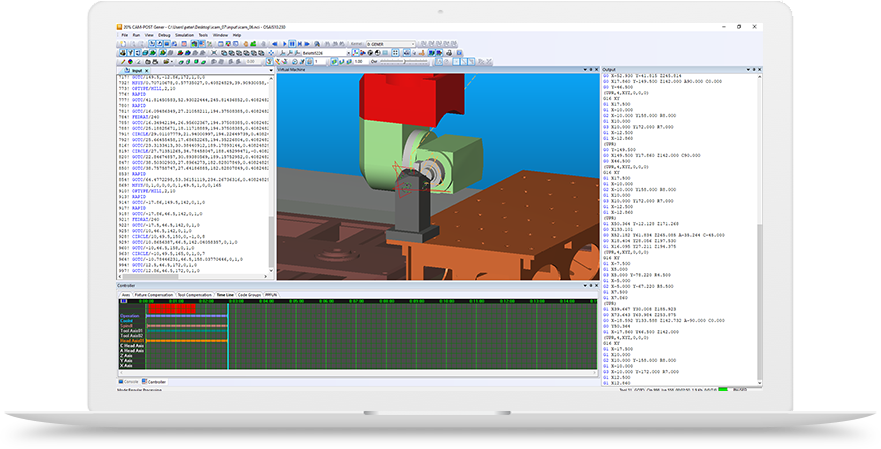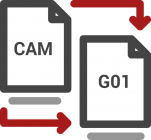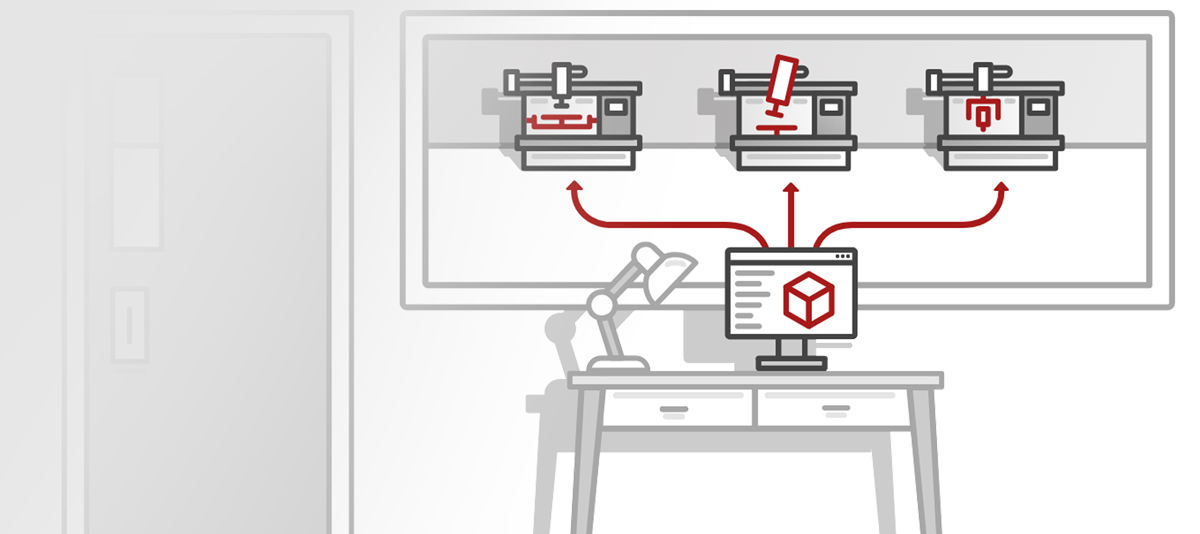


CNC post-processors custom-built for your unique machine setup
At ICAM we’ve been building world-class custom CNC post-processors for over 50 years. Thanks to our in-depth machining and industry knowledge, partnerships with major CAM systems and exclusive CAM-POST development platform , we can build exceptional posts for all major machine tools and CNC controller brands, including all classes of CNC equipment featuring any combination of rotary heads and/or rotary tables.
Mills, Lathes, Horizontal/ Vertical Machining Centers, Merging Lathes, Multi-Tasking Mill/ Turns, Punch Presses, Wire EDMs, Water Jet Cutting Machines, Laser Cutting Machines, Plasma & Flame Cutters, Hybrid and Special CNCs.
ICAM Post-Processing Solutions in Action
The G-Code you want,
where and when you want it.
With generic CNC post-processors, you’re often stuck manually modifying your G-Code to get it match up with your existing machining methodology and preferences. But with our custom-developed CNC posts, we build your preferences and practices into the post itself, allowing you to focus on designing your best tool-paths, while we handle the nitty-gritty.

Transformation
Supports translation, rotation, scale, mirror and additive transformations.

Canned Cycles
Run your controller’s predefined cycles for drilling, milling, turning and probing.

Compensation
Compensate for deviations with 3D volumetric, spindle-pitch, tool radius, and more.

Custom Macros
Fine-tune your NC output even further with powerful, custom-developed macros.

Built-in machine simulation sees and corrects errors before they happen
Rotary Pre-Winding
Extend the travel of your rotary axis by automatically winding the axis backwards before the cut, avoiding unnecessary retracts, turn-arounds and approaches.
Head-Dancing Avoidance
Automatically eliminate head and table wobbling when moving along low-angle, near- singular compound curves
Dwell mark Elimination
Take advantage of several CAM-POST features that are designed to eliminate dwell marks caused by momentary pauses in tool motions.
Why buy a custom CNC post-processor?
CNC post-processors can do many other things besides translating CLDATA to NC machine codes. For example a CNC post-processor may summarize axes travels, feed and speed limits, job run-time and tool usage information, which enables better selection and scheduling of resources.
More sophisticated CNC post-processors may validate the program before it is run by the machine tool. There are many simple rules that a CNC post can follow, with warning messages displayed when these rules are violated. Some examples: Noting if a tool is not selected near the start of the program, warning when motions at feed rate are done with a stopped spindle, flagging long series of positioning moves, or conversely, flagging feed moves at or above the program clearance plane, or noting if diameter or length compensation switches are not changed when a tool is.
Beyond simple validation comes correction. There are many situations where a CNC post-processor can detect an error and correct it. Examples include: cycles left active during a tool change (they should be temporarily cancelled), selecting an incorrect or nonexistent spindle gear range (the post-processor should select a range that supports the speed), or specifying an unavailable coolant type (the CNC post should select the next best type).
The best CNC post-processors maintain a global picture of the entire job at all times, using upcoming events to help make decisions about current ones. The NC programmer uses this information to optimize the job without intervention. For example: pre-selecting the next tool as soon as physically possible, segmenting a tape at a tool change if the entire upcoming tool path will not fit on the current reel, selecting a spindle gear that best fits the current and subsequent speed requirements, or switching intelligently between parallel axes (Z and W) based on the types of upcoming operations and available travel limits.
CNC Post-processors can also work around limitations and bugs in the CAM system or in the machine tool. It is generally far easier to change the CNC post than it is to get a new revision of the CAM system, or a new executive revision for the NC controller.
The important point to be made here is that the NC programmer should not be concerned about machine tool or machine operator idiosyncrasies that do not directly affect the production of a job. Wherever possible, good CNC post-processors should hide these details within.
Standard CAM systems, standard NC machines, standard CLDATA and standard CNC post-processor vocabulary can not all be mixed together to instantly produce a working system. There are too many variables in the real world, and standards are too restricted in scope, to achieve integration with off-the-shelf components.






